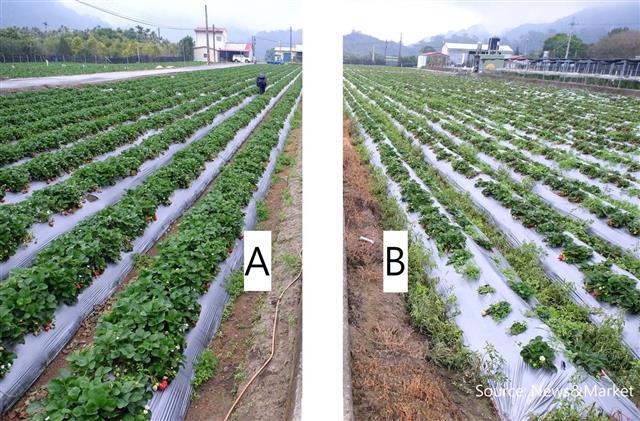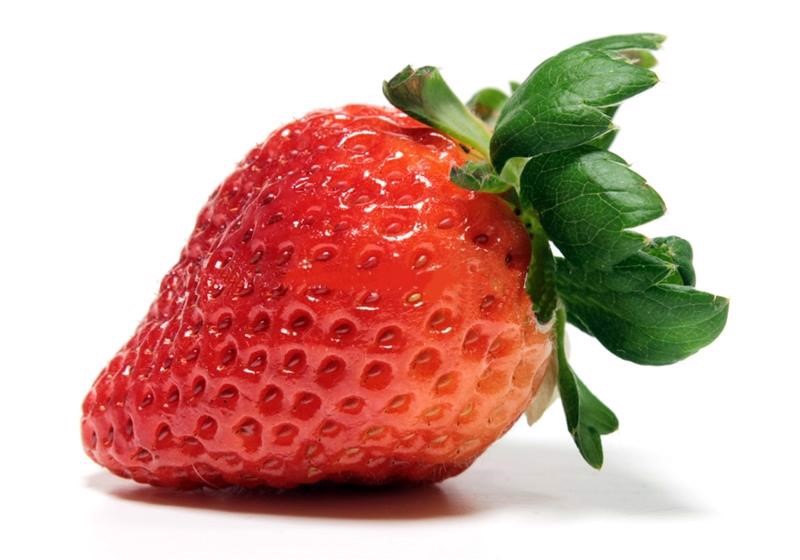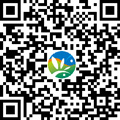
B&B e-Paper
B&B e-Paper
B&B E-Paper No.7
Advances cultural techniques for effectively reducing strawberry crop loss
The total strawberry production area in Taiwan is about 550 hectares, with an average yield of 13, 619 kg per hectare. In 2016, around 7,487 tons of strawberries were produced, valued at nearly TWD 1.8 billion (USD 59.3 million). (Agricultural Statistical Yearbook, Executive Yuan Agriculture and Food Agency, Council of Agriculture, Executive Yuan, R.O.C., 2017). Average strawberry seedling demand is about 27.5 million. The suitable nursery environment for strawberry seedlings requires high humidity and under shade condition, plus high planting density, which is also optimum for anthracnose disease development. Anthracnose is an important disease of strawberry that can affect seedling, foliage, runners, crowns and fruit in both nursery and field. The fungus can survive on infected plants and plant debris, which make farmers struggle to control this disease. Anthracnose disease has led to strawberry seedling shortage up to 4 million in 2016, which causes a severe impact on strawberry industry in Taiwan.
However, the resistance/susceptibility of strawberry to strawberry anthracnose vary by cultivars. The strawberry varieties cultivated in Taiwan are mainly ‘Feng Hsiang’ (豐香) and ‘Hsiang Shui’ (香水). With strawberry anthracnose infection on seedlings can cause 30-40% ‘Feng Hsiang’ plant death in field. Replanting increases the production cost, while the condition favors strawberry anthracnose disease development, even results in 90% replanting, causing severe crop loss.
In 2019, Taiwan Agriculture Research Institute, COA has developed strawberry IPM for controlling strawberry anthracnose. Before planting, organic fertilizers (containing molasses, soybean meal, rice bran, etc.) were mixed into soil and covered with plastic mulch for two weeks for killing pathogenic fungi in soil. After land preparation and tillage, strawberry seedlings were treated with Bacillus amyloliquefaciens P-2-2 (106 cfu/ml) and planted into the field, which would reduce the replanting rate of strawberry. The results indicate that the replanting rate of treatment group and control was 37.6% and 10.7% in ‘Feng Hsiang’, respectively; likewise, the replanting rate of treatment and control was 15.4% and 1.5% in ‘Hsiang Shui’. This strawberry IPM would save farmers approximately TWD 260,000 (8,600 USD) production cost per hectare.
|
|
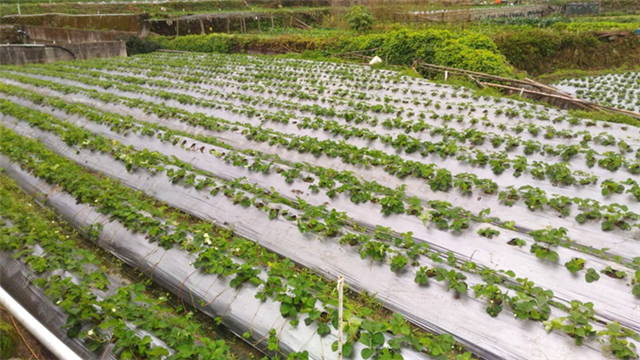 |
| Fig. 1. Control group (right) and treatment group (left) show a significant difference on strawberry growth in Feng Hsiang variety by using IPM technique. | |
Furthermore, National Chung Hsing University has developed a nutrient solution with Bacillus subtilis WG6-14. Farmer Wu, who is in Miaoli has sprayed the leaves once every 3-4 days and also irrigated the soil once every 7-10 days with this solution after planting until harvest. In February 2020 field trail, the strawberry plants applied this nutrient solution are healthy and strong than untreated ones. The proportion of larger fruits were as high as 70%, and the average yield was increased by 25%. Also, the use of chemical pesticides and fertilizers was reduced by 50%.
|
|
|
| Fig. 2. Treatment group (A) and control group (B) show a significant difference on strawberry growth by using nutrient solution with B. subtilis WG6-14. |
Commercial biopesticide for strawberry
Bacillus amyloliquefaciens strain CL3 (BACL3) was screened by Taiwan Agricultural Chemicals and Toxic Substances Research Institute, COA and has been technology transferred to Sinon Corporation. Sinon Co. has developed and registered a suspension concentrate (SC) formulated biopesticide based on BACL3, named Shen Zhen Shui No. 3 (1X108cfu/ml).
Shen Zhen Shui No. 3 is a biopesticide with the following characteristics:
1. No limitation of pre-harvest interval and no chemical pesticide residue.
2. Produce secondary metabolite to destroy cell membrane of fungus and competition against pathogens.
3. It can induce plant systemic resistance and improve the self-defense ability of crops.
4. It can change soil biota to promote nutrient uptake and growth of crops.
5. This product is a preventive application and should be applied before or at early infection in accordance with the climate in which the crops are prone
to diseases in order to achieve the preventive effect.
6. It can effectively control grey mold of strawberries, vegetables and ornamental plants.
|
|
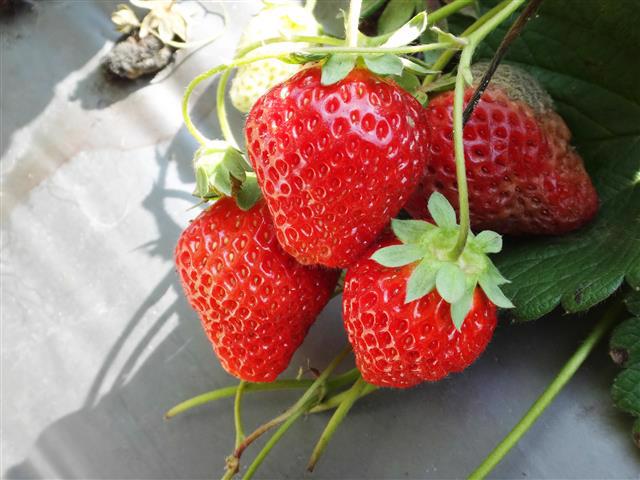 |
| Fig. 3. Control group (left) and treatment group (right) illustrate a significant difference on resistance to gray mold of strawberries by using Shen Zhen Shui No. 3.) | |
Main strawberry varieties in Taiwan |
“Feng Hsiang豐香” Strawberry ( Taoyuan No. 1 )
The “Feng Hsiang” has become the most popular strawberry grown in Taiwan ever since the introduction from Japan in 1985, renamed in 1990 and extended by Taoyuan District Agricultural Research and Extension Station (for more than three decades).
It is a robust cultivar with features of spreading growth habit, medium density of foliage, green upper side leaf, white upper side petal, medium flowering time; conical shape, medium-size red fruit, light read flesh, and white core.
Harvest of this midseason variety starts in early January. The rich flavor and fragrance with medium hardness and high sugar content (10-12 degrees Brix) have made the cultivar widely favored. However, the plant is vulnerable to low temperatures and pests as well as a number of diseases in addition to a high deviation of shape during ripening. Despite those concerns, its high yield and resistance to rough storage/transportation make “Feng Hsiang” a popular cultivar still.
|
|
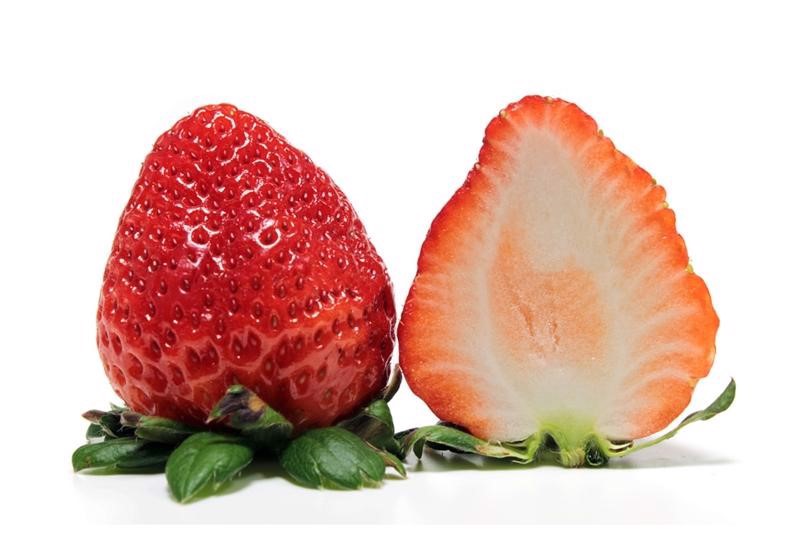 |
“Hsiang Shui香水” Strawberry
Hsiang Shui” was bred by local farmers and has gained popularity next to “Feng Hsiang” for its toughness, comparatively more tolerant to weather and better diseases resistance. It is characterized by a semi-upright growth habit, green leaf, and medium density of foliage with white petals. The early flowering and high yield features allow mid-early season harvesting begins in mid-December.
The fruit has a red conical shape in medium-size and shows a pink flesh and core with a distinct pleasant scent and sweet fruity flavor (sugar content about 8-10 degrees Brix depending on rainfall). Its medium hardness texture is losing during ripening and the softness is also a difficulty in storage and transportation. Farmers grow 'Hsiang Shui' and 'Feng Hsiang' respectively to get the best advantages of those two different strawberry cultivars. As the spring in Taiwan becomes hotter and more humid, some farmers began to switch to cultivate “Hsiang Shui” to accommodate climate change.
|
|
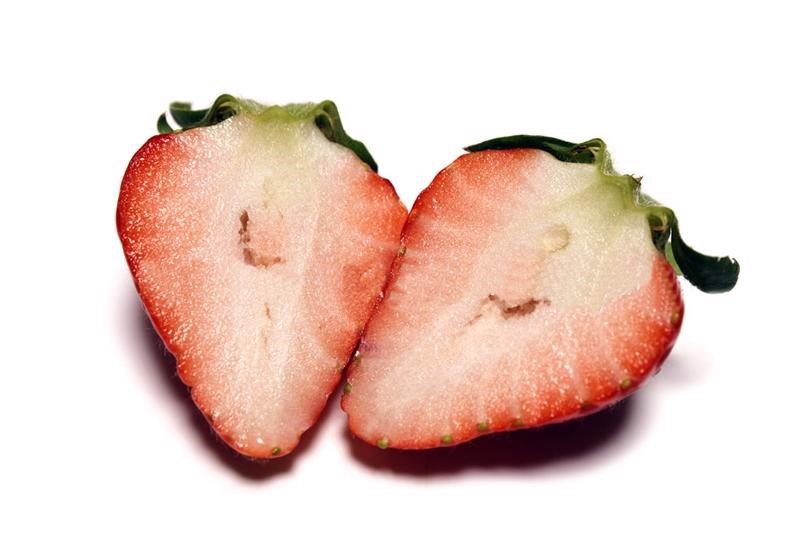 |
|
In Miaoli County, Feng Hsiang was popular prior to 2014, accounted for 80% of total cultivars and 20% for Hsiang Shui. However, climate change and weakening of variety has drawn attention to the economic traits of disease resistance making Hsiang Shui more attractive to local producers. Furthermore, Hsiang Shui can be harvested a month earlier with an equivalent yield of Feng Hsiang; these benefits are getting considerable appreciations and turning the percentage ratio of planting Hsiang Shui / Feng Hsiang to 55/45 in 2019 and may reach 70/30 in 2020. |
|
Seek Now >> Taiwan Commercial Seed (http://tssb2b.tss.gov.tw)

